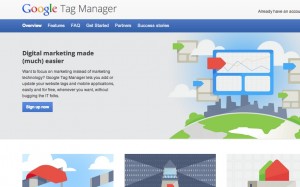Digital marketing campaigns can become complicated to tag and maintain, especially in light of where ads are placed and the devices used. But fortunately there are solutions meant to organize tags to make multiple campaigns orderly. This post, originally created for the UBM Tech site Digital Draw, takes a close look at how tag management makes a difference in your digital marketing campaign.
Tag management differs from the URL tag builders that you typically see associated with Piwik or Google Analytics. Adding standard page Javascript tags is straightforward for reasonable sized websites. Running a few paid search campaigns or directing campaigns for a few networks would be overkill for a tag management system.
But there is a hitch; suppose the site in question has a large volume of pages or subdirectories. This is typical for large e-commerce sites.
If you have landing pages and plan for paid search or other digital marketing, the complexity increases further. Standard URL builders can only create one parameter for each intended tagged page at a time, and while there are additional solutions for multiple-tag creation, the implementation is still labor intensive. The end result is potential error in inserting tags.
Enter tag management, applications designed to easily organize multiple campaign tags. Tag management solutions typically deploy a singular master tag instead of the Javascript tags that are normally coded into a website page. The master tag is served with the page based on instructions from the management’s application.

Tag Managers cover a number of solutions, from a straight-forward tool such as Google to professional services built around a solution such as Tagman.
But as earlier mentioned, the increased myriad of online presences beyond a website (banner ads, mobile ads, website, social media presences) coupled with growing customer means to view media (laptop, tablet, smartphone, TV) has increased the potential number of tags required to measure the health of a marketing message delivery.
Moreover, campaigns that inherently require rapid responses to customer conditions can cause havoc to schedule tag changes. Small organizations can be overrun in ensuring the right campaign is tagged and operating properly.
Thus a tag management system can ease activity when scheduled campaigns on numerous networks are planned. Tags are centralized and marketing measurement among various media becomes organized as a result. For example, imagine planning a marketing campaign with banner ads, paid search, and QR codes on fliers. With a tag management system in place, a targeted network can be smoothly integrated alongside another manager’s preferred analytic solution for monitoring banner ad performance.
Fast optimization for multi-channel marketing is an additional benefit, since tag updates can be better kept in sync with the campaign schedule. Given the increase in consumers blending marketing channels through using mobile devices The speed in making tag changes becomes a significant influence for faster campaign launches.
Tag management can reduce installation time when faced with multiple pages. Quality assurance of tags can be better managed. The potential cost benefits can be great as a result. A survey by eConsultancy and tag management system provider Tealium noted that 73% of its respondents observed reduced costs associated with tag management systems.
The aforementioned example of testing and marketing campaigns can create a operational challenge. Because companies often plan to display media on various networks, tag management system can be a gateway for managing multiple vendors. The tag management system vendor would have to verify the tags each vendor provides to avoid operational error. Thus a tag management vendor should have a solid support team behind the tag manager solution. Some do, but main systems do not. Your business should consider its technical resources and internal capability before making a selection. Without applying care, your team can unintentionally create additional effort within your business’ IT and marketing to support the tag management.
A number of sources are available to evaluate how a tag management system fits in your business. Forrester, through an Adobe white paper, explains an assessment to determine if a tag management system is suitable for your organization. Stephane Hamel, a well regarded analytics expert at consulting firm Cardinal Path, offer pragmatic thoughts on evaluating the impact of tag management solutions on an organization.
Be sure to take a look at the current crop of tag management solutions available. Tag management vendors include Tealium, TagMan, Satellite and Ubertags.